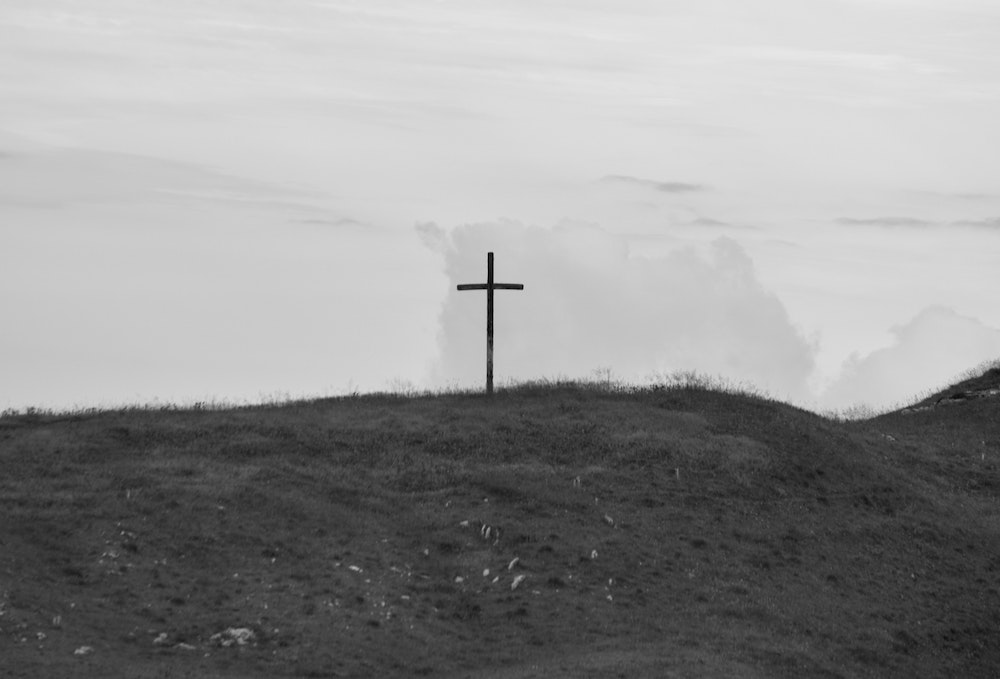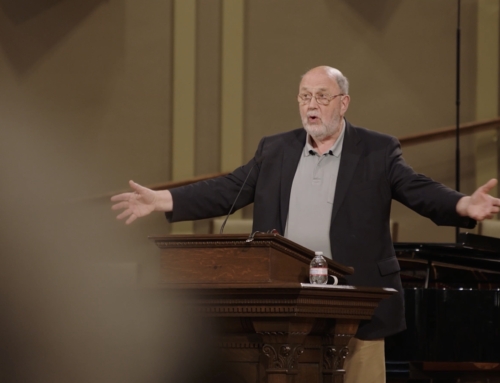I remember when rumors first started to circulate that N.T. Wright was writing a book on the atonement. Like many Christian leaders who grew up in evangelical Christianity, I was wrestling to understand with some depth how the death of Jesus rescues us from sin. Through my two seminary experiences in the late 1990s and mid 2000s, I assumed the standard American Reformed/evangelical language was sufficient. I accepted rather uncritically that Jesus had both ‘paid the price for my sins’ and was ‘punished in my place’. This kind of language for the atonement grew specifically out of penal substitutionary atonement theory, which has become the de facto theory in evangelicalism broadly. For some theological streams, this theory has in fact become the very heart of the gospel message.
By the early 2010s I was questioning whether or not this theory was the best representation of atonement as expressed in Scripture. I was astonished to discover that the specific phrase ‘Jesus paid the price’ doesn’t actually appear anywhere in the Bible. So when I began to hear that Professor Wright was writing an entire book on the atonement I was thrilled! Many of us who had been reading his works, listening to his lectures, and paying close attention to the interviews he gave, had questions about what he actually believed about the atonement. I understood that, as a biblical scholar, Professor Wright was less interested in categorizing the meaning of the death of Jesus in rigid dogmatic theories and more interested in understanding how the death of Jesus fit within the grand biblical narrative.
In 2016, when The Day the Revolution Began arrived on my doorstep, I started reading immediately. As I began to work my way through the book, I realized that I could not read it without my Bible open next to me. For the next couple of months, Professor Wright did what he does best through his books: he led me through the Scriptures to see what the biblical writers in their historical context had to say about the death of Jesus, why it was important, and how pivotal the events of Good Friday were to God’s story of redemption and new creation. Here are the key takeaways from the book that have impacted me the most as a pastor and teacher.
1. Diagnosing the Theological Problems
We all implicitly read Scripture through a particular theological framework. Modern evangelicalism has often misunderstood the meaning of the death of Jesus in Scripture because, as Professor Wright has rightly diagnosed, much Christianity has a threefold theological problem. We have made the essence of humanity about obeying God’s rules (a moralized anthropology). We have reduced salvation to an angry God’s need for appeasement (a paganized soteriology). And we have made ‘going to heaven’ upon death the end goal for the Christian life (a Platonized eschatology). These theological problems will skew our reading of Scripture, especially when we work to understand why Jesus died. They form the context for what Professor Wright calls the faulty ‘works contract’ we’ve erected between God and humanity. In reality, Scripture draws a picture of a ‘covenant of vocation’. It’s not that humanity has failed to keep the rules and needs to be punished. Rather, the issue is that humanity has been created to bear the loving image of God into all creation, but that image has been broken and needs to be repaired.
2. Asking the Right the Questions
Since the days of the Reformation, Protestants have been asking questions like: What is required for people to escape the judgment of hell since we have rebelled and broken God’s rules? How can we be made acceptable in the sight of a holy and righteous God? What do we need in order to be assured heaven when we die? While these questions have some rootedness in Scripture, they were not the questions first-century Jewish people were asking. If we want to understand how the death of Jesus in the first century became the answer for all humanity, we need to start by asking first-century questions. The people of God in the first century were not asking questions about rules, God’s anger, or going to heaven. According to Professor Wright, they were asking questions like: When is God coming back to redeem Israel? When will this lingering exile come to an end? When will the renewal of the covenant promised by Jeremiah come to pass? When will the Messiah come and restore the kingdom? The question for which the death of Jesus is the answer is not who needs to be punished, but when will God’s new covenant project begin?
3. Moving Beyond Proof Texting
Questions rooted in the first-century Jewish world prevent us from picking a select few verses from here and there in the Scriptures to cobble together a theory of atonement. The above questions help us reframe our understanding of atonement within the story of Israel, a story which reaches its climax in the coming of Jesus. The canon of the Hebrew Scriptures, in the order Christians use, ends without a proper conclusion. Jesus, whose death and resurrection are key moments, is the long-awaited ending to the Israel story. When Paul writes, ‘Christ died for our sins in accordance with the scriptures’ (1 Corinthians 15:3 NRSV), he does not mean Jesus died according to a few verses about suffering in the Bible. Rather, Jesus died for our sins according to the long and winding story the Scripture tells—a very Jewish story of the one creator God, a story of the people of God rooted in a promise given to Abraham, a story of promised new creation.
4. Defining one Tricky Greek Word
When we step back to see how the death of Jesus finds coherence in the story the Bible is telling, we can begin to paint the meaning of Paul’s reflections on the death of Jesus with colors from the Hebrew Scriptures. One key Greek word in Paul’s description of the death of Jesus is hilasterion, translated ‘sacrifice of atonement’ in the NRSV. The ESV translates that word ‘propitiation’, that is, a sacrifice offered to appease a deity. However, when hilasterion is used in the Septuagint (the Greek translation of the Hebrew Scriptures first-century Jews would have used), it refers to the mercy seat where blood was offered in sacrificial worship. When that word is used in places like Leviticus 16, it refers to the place where atonement is made for the cleansing of Israel (Leviticus 16:15-16,19). We find no references to appeasement in Leviticus 16. Accordingly, Paul describes Jesus as the one ‘whom God put forward as a sacrifice of atonement [hilasterion] by his blood’ (Romans 3:23 NRSV). Jesus’s blood made an atonement for the cleansing of our sin, not to appease a morally offended God.
5. Rooting Atonement in the Gospel of the Kingdom
Jesus’ death fits within the Jewish narrative of God coming to restore the kingdom to Israel, so that the God of Israel would truly be ‘the king of all the earth’ (Psalm 47:7 NRSV). Jesus himself chose to describe the meaning of his death not on Yom Kippur, the Day of Atonement, but during the Passover celebration at his final meal with the disciples. Jesus described the cup as his blood ‘poured out for many for the forgiveness of sins’ (Matthew 26:28 NRSV). For those original disciples, ‘forgiveness of sins’ implied the end of exile which they were still experiencing as an occupied people under Roman domination. It also signaled the return of the king. Jesus’s death demonstrated how the kingdom was to come—not through the conventional means of military might, but by co-suffering love.
Untangling Knots
I cannot express how profoundly impacted I have been by The Day the Revolution Began. It not only helped me to untangle some personal theological knots, but more importantly it has caused me to gaze more lovingly, and with much greater appreciation, at Christ crucified. It has caused me to be more faithful to what Scripture has said about God’s work of redemption. And it has motivated me to preach the gospel with more confidence in him who reigns from a throne on Golgotha’s hill.
Latest posts by Derek Vreeland (see all)
- Reigning from Golgotha’s Hill: 5 Insights from The Day the Revolution Began - April 8, 2022
- A Bright Shining Light: Five Things Revealed to Us by John’s Jesus - August 24, 2018
- Tracing Atonement Through the Story of Scripture - May 21, 2018







